Haworthias are famous for their diverse varieties and unique foliage. Caring for these succulents can be baffling at the beginning. But once you get acquainted, it will become easy.
Haworthias need indirect sunlight, average watering, room temperature and humidity, well-drained soil, and occasional fertilizing. Haworthias are tender succulents and need protection from extreme weather conditions. Provide adequate care to keep any problems at bay.
Haworthias can be grown both indoors and outdoors if given adequate requirements adequately.
Leaves turning brown, yellow, white, red, black, dry, or mushy are common problems. With the right identification, you can treat the issues.
This article will give you deep knowledge about the basic requirements of Haworthias, the problems they face, and the ways of dealing with them.
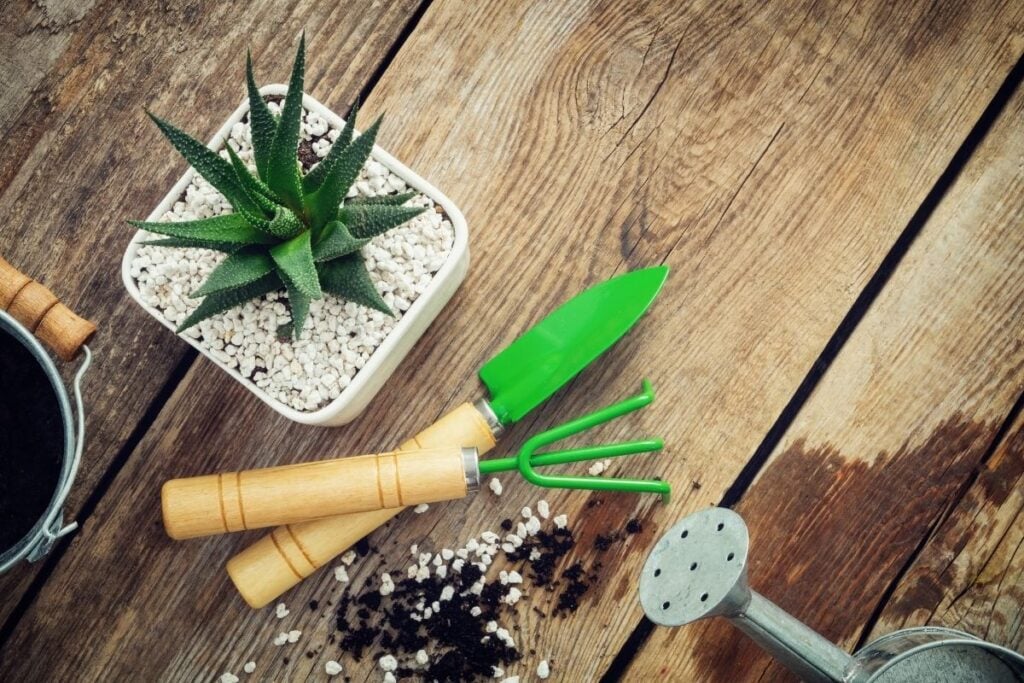
Haworthia: An Overview
Haworthias are a genus of small succulent plants native to Southern Africa.
They grow under rock shrubs and grasses.
Its early subgenera like Haworthiopsis, Tulista, and Gasteria are now known to have their genera.
Origin
Henri Duval borrowed the name in honor of an English botanist, Adrian Hardy Haworth, in the 19th century.
In 1804, the botanist found a difference in Haworthias and typical aloes and grouped the former in the section of Parviflorae.
Later on, in 1809, Duval separated the genera and accepted the name Haworthia in 1812.
In 2013-14, Gordon Rowley and John Manning divided the genus into 3 genera – Haworthia, Haworthiopsis, and Tulista.
Haworthias belong to the family of Asphodelaceae, the subfamily of Asphodeloideae, and the tribe of Aloeae.
Haworthias look like miniature Aloe Vera plants.
The distinctive is in the appearance of flowers.
Haworthias are available in over 150 species, out of which many Haworthias have been shifted to Haworthiopsis and Tulista category.
Many people confuse Haworthia with Haworthiopsis.
The difference is in the leaves.
The physical structure of Haworthiopsis is thicker and harder than Haworthia.
Physical appearance
Haworthias can grow nearly from 3-30 cm in diameter.
It may differ depending on the species.
These plants are mainly stem-less plants. Some other varieties have stems from which a flower emerges.
It is called an inflorescence.
They can grow up to 40-50 cm in height.
Generally, they grow solitary in clumps.
Some have fleshy dark green leaves, some have small balloon-like leaves with transparent windows or lenses at the tips, and some have cucumber shapes with white stripes and dots.
Some of them are normal green.
Are Haworthias indoor plants or outdoor plants?
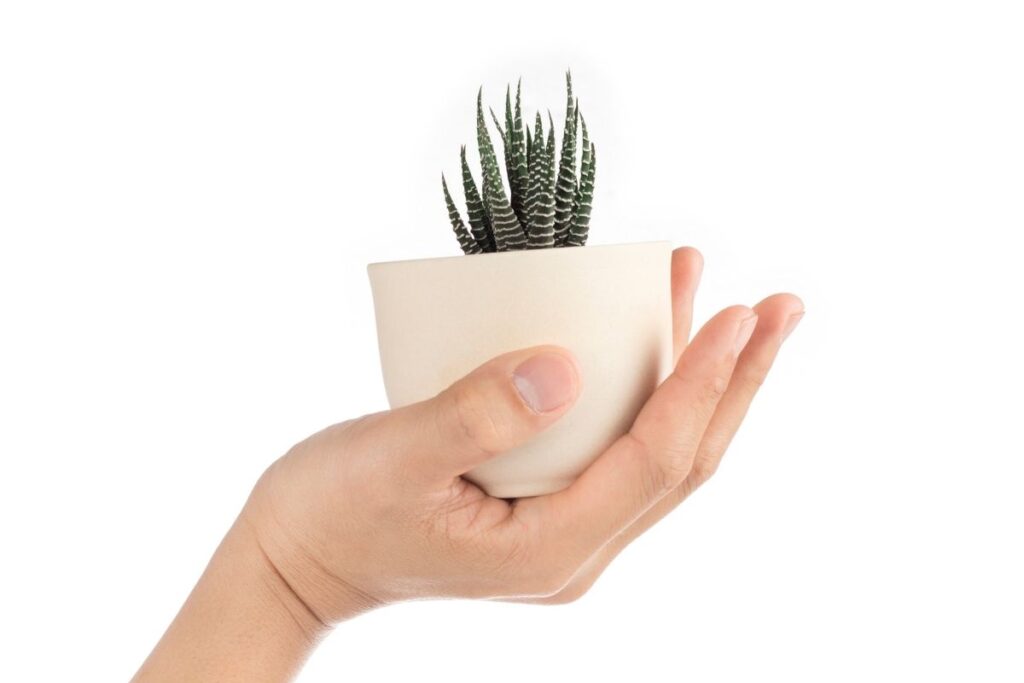
Haworthias can be grown both indoors and outdoors.
Many people grow Haworthias as houseplants because of their indirect light and room temperature requirements.
They grow well indoors under a controlled environment.
But, with proper control and maintenance, Haworthias can also grow outdoors without any hassle.
Haworthias will require a partially shady place to stay outdoors.
They can stay outdoors seamlessly with adequate light, watering, good soil, average temperature, and protection from the cold.
Wherever you grow them, ensure they get the ideal growing conditions and environment.
The plant will thrive.
Also read: Is Haworthia An Indoor Plant? (Indoor Care+Can We Keep It Outside)
Are Haworthias easy to grow?
In the beginning, it might be tricky enough to take care of them, especially outdoors.
Haworthias need indirect light and average temperature to survive.
As these two are unpredictable outside, the beginners struggle a bit.
But, with good knowledge and daily practice, it will be manageable.
Since indirect light and room temperature are already available indoors, growing Haworthias indoors would be easy even for novice gardeners.
Haworthia varieties
Lots of Haworthia varieties are available widespread.
Some of them are a look-alike of Aloe Vera plants and some contrasts in the leaf structure and design.
The care is the same for all. Let’s take a look at some.
| Haworthia variety | Description |
|---|---|
| Haworthia fasciata | Fasciata is a popular variety. They have long, pointed, deep green leaves with white spots and stripes. They are also known as Zebra succulents. Fasciata has small rosettes measuring 7 cm in length. When they turn mature, the leaves will grow about 10-30 cm long. |
| Haworthia attenuata | Attenuata look like Fasciata. Most people confuse these two. However, the difference is spotted in the pattern of the white marks. Attenuata only have white stripes and no dots. They can grow around 7-25 cm in length. |
| Haworthia Cooperi | Another common variety is Cooperi. Their leaves resemble tiny balloons. It looks like lots of water is preserved in them, and the leaves will burst with a little pop. The leaves have a transparent lens or window on the tips. The plant absorbs the light from these windows and grows only 2 inches. |
| Haworthia Truncata | Truncata looks as if half of the leaf is broken from the middle. They are unique as the foliage is green with pale grey lines and flat endings. They also have lenses to absorb light. This variety is a bit tough to manage due to their look. They will grow up to a height of only 2 cm and spread about 10 cm. |
Also read: What Kind Of Haworthia Do I Have? (18 Common Varieties With Pictures)
Planting Haworthias
When to plant?
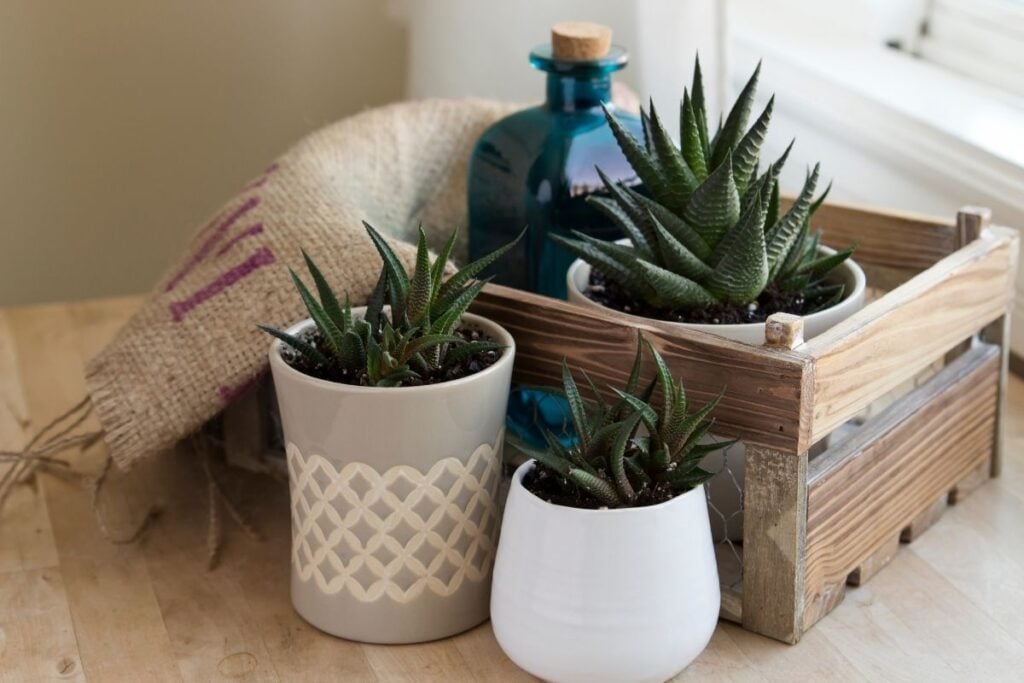
The best time to plant Haworthias is during the spring.
It is their growing season so they would be growing vigorously.
If you grow them during the offseason, you cannot witness their growth properly.
Being slow-growing succulents, they need their actively growing months to progress their growth.
Already they are slow-growers.
Over that, they stay dormant in the hottest summer days and even sometimes in the coldest winter days.
That is why the best time is spring.
Fall months are also good but not as effective as spring.
Looking for gardening supplies? We have tested 100's of products before recommending them to you guys. Check out our best pick below:
| Image | Gardening Supplies | Best Price? |
|---|---|---|
 Top
Top Top
Top | Raised Garden Bed Kit | Check On Amazon |
 | XLUX Soil Moisture Meter, Plant Water Monitor, Soil Hygrometer Sensor for Gardening, Farming, Indoor and Outdoor Plants, No Batteries Required | No Results |
 Top
Top Top
Top | 82 Pcs Garden Tools Set and Extra Succulent Tools Set | Check On Amazon |
 | Joeys Garden Expandable Garden Hose with 8 Function Hose Nozzle, Lightweight Anti-Kink Flexible Garden Hoses, Extra Strength Fabric with Double Latex Core, (50 FT, Black) | No Results |
 Top
Top Top
Top | Dual Chamber Compost Tumbler | Check On Amazon |
 Top
Top Top
Top | Sunnyglade Plant Stakes | Check On Amazon |
 Top
Top Top
Top | Organic Cold Pressed Neem Seed Oil | Check On Amazon |
 Top
Top Top
Top | Mighty Mint Gallon :-Insect and Pest Control Peppermint Oil | Check On Amazon |
 Top
Top Top
Top | Scotts DiseaseEx Lawn Fungicide | Check On Amazon |
 Top
Top Top
Top | Jacks Classic 20-20-20 All Purpose Fertilizer | Check On Amazon |
 Top
Top Top
Top | 30,000 Seeds Pollinator Attracting Wildflower Mixture | Check On Amazon |
 Top
Top Top
Top | Survival Vegetable Seeds Garden Kit-Over 16,000 Seeds | Check On Amazon |
Where to plant?
Choose an ideal location for good growth.
Some ideal indoor locations are:
- Near a sunny window, a few feet back.
- Depending on the direction and sun intensity, you may or may not use sheer curtains to filter the direct sun.
- In the bedroom, study room, or drawing room, they help balance our body and mind, calm down our emotional state of mind and improve breathing.
- Away from pets and children because they may try to taste them out of curiosity, it also prevents accidental bumping.
- Away from heaters, radiators, or air conditions can harm them because too much hot or cold.
- Away from the bathroom, kitchen, aquarium, and fireplaces are humid areas, and high humidity can rot them.
For outdoor locations:
- A location with indirect sunlight. Feel it with your hand. If the heat feels mild and the shadow is soft, it is indirect light.
- A place with some tall trees or a parapet wall around, but not too close. It helps to give Haworthias filtered light or partial shade. It also obstructs sudden air currents.
- A place away from rooftops and fountains as water can drip or splash constantly and increase the moisture level.
- An isolated place where pets and children won’t visit much.
Also read: Where To Put Haworthia? (Ideal spot)
How to plant Haworthias?
- Choose an ideal location.
- Dig a hole depending on the root size so that the roots can sit properly.
- Place the plant in it and spread the roots properly.
- Cover the sides and roots with some soil and press well.
- Water well to moist the soil. Don’t water too deeply until the plant gets settled.
- To improve drainage, add some layers of gravel or other gritty materials.
For potted plants:
- Take a pot with a drainage hole and an ideal size.
- Fill half of it with the ideal soil mix.
- Place the plant in the center. Make it sit properly and spread the roots.
- Fill the pot, cover the roots with the remaining soil, and water them.
I shared pot planting because many gardeners place Haworthias in containers and keep them outdoors due to their compact size.
Haworthia Care Guide
Now, let’s dive into the complete care guide for Haworthias to understand them.
These are the basic requirements you must follow to keep them healthy in the long term.
Haworthia light requirements
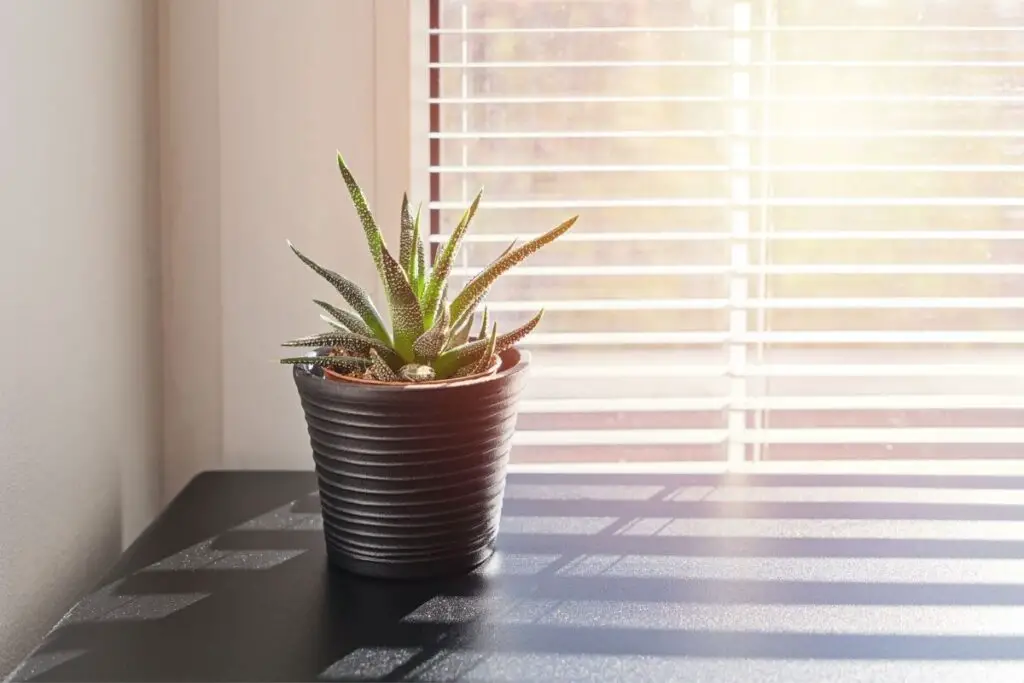
Though some Haworthias can be found under the full sun, most of them grow well under the protected spots like under the shade of trees.
They require bright indirect sunlight for good growth.
However, you can let them have direct sunlight in the morning for 3-5 hours, till 11 am.
It helps them to absorb the light well, let the soil dry out faster, and even protect them from pest or fungus infestation if any.
If they receive too much light, put on transparent shading nets to filter it.
They will be protected from the sunlight if there are some tall trees around at a distance.
Always check which direction your garden gets an adequate amount of light because the light is very important for the good functioning of photosynthesis.
There are high chances of low light situations indoors.
The soil won’t dry out, resulting in prolonged dampness.
In such cases, use traditional white, cool fluorescent lights for them.
Also read: How Much Light Does Haworthia Need? (Haworthia Light Requirements)
Haworthia water requirements
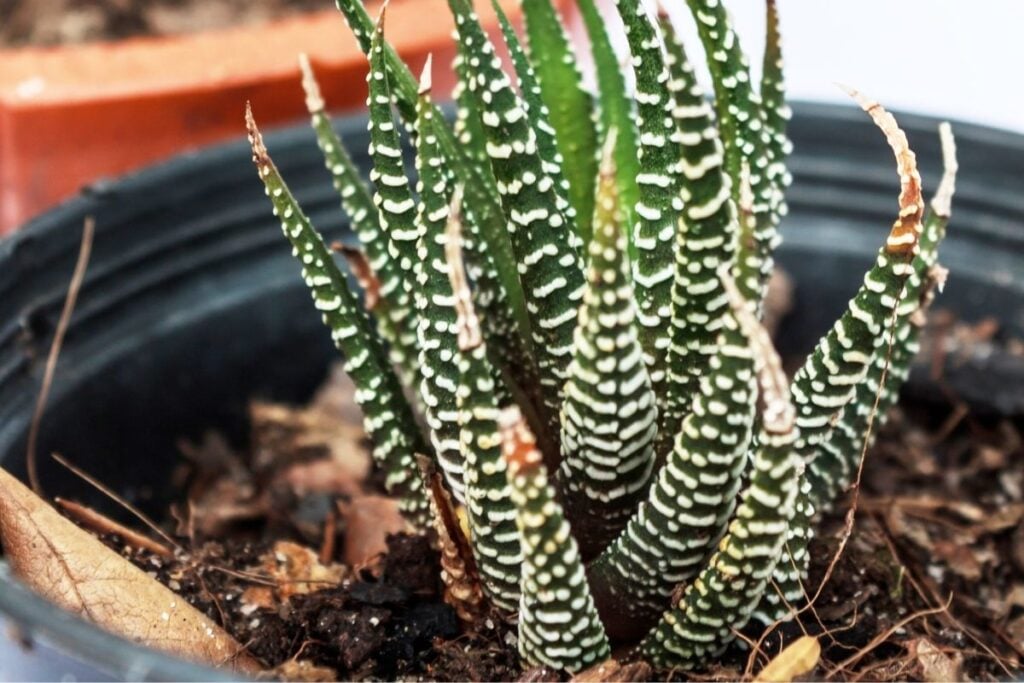
Haworthias can preserve water in their leaves, and their roots are naturally made to experience dry conditions at some time.
That is why their need watering infrequently.
Since the time gap of watering is quite long, you must water them deeply so that the soil can retain the moisture for at least 5-6 days.
If you are a beginner, first check the soil’s moisture level before watering.
When the top 1-2 inches of the topsoil feels dry, the plant is ready for watering.
This will help you to understand the time gap between each watering.
Once we get familiar with it, you can schedule to water them.
In general, they require watering once every 1-3 weeks.
However, this may differ depending on the weather conditions, pot type, soil type, and plant’s maturity.
Be careful during the summers as it is their dormancy period.
If the temperature stays within 80-90°F, you can water them to keep them cool.
But if the temperature crosses 90°F, they will cease their growth, and you need to stop watering.
In the winters, water them sparingly, once a month, as the evaporation rate is slow.
Watering too frequently can cause root rot.
Also read: How Often To Water Haworthia? (Haworthia Water Requirements)
Haworthia soil requirements
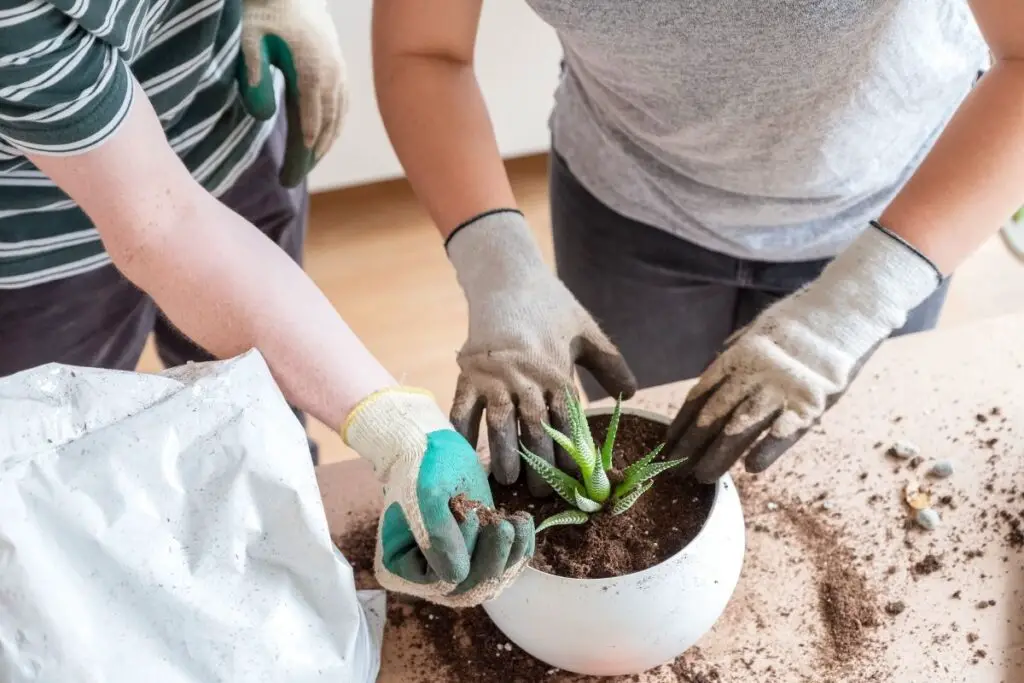
Soil type can affect the watering.
The soil must have a balance of good drainage and retention.
The soil must have some porous materials, which will help in good drainage.
At the same time, the soil mix must hold enough moisture for at least 4-5 days to let the plant absorb it slowly.
Some ideal soil mixes are:
Recipe 1
Recipe 2
Equal parts of:
- 60% Coarse sand
- 40% Potting soil.
Recipe 3
- 50% gravel of appropriate size
- 50% of soil, coarse sand, and organic fertilizer
Recipe 4
- 80% pumice
- 20% coir, 1-3 mm approx.
Recipe 5
- 40% parts potting soil
- 40% parts small gravel
- 20% part perlite or pumice
If your soil mix creates problems, add poultry grit, aquarium gravel, pumice, and perlite to improve the drainage.
Also read: What Soil To Use For Haworthia? (+Ideal Soil Mix)
Haworthia fertilization
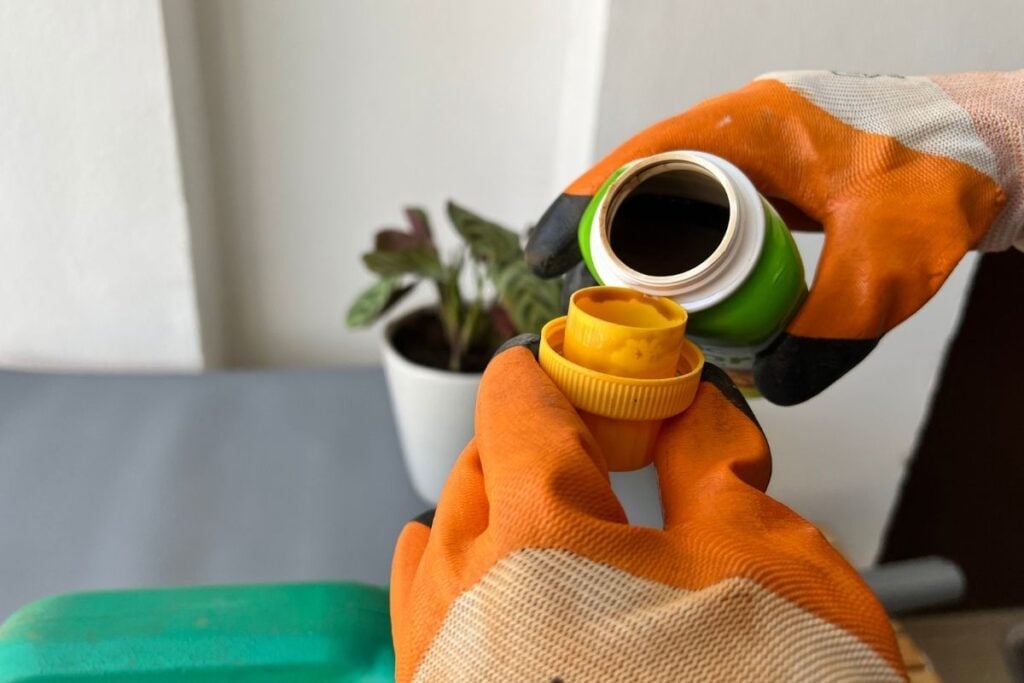
Haworthias don’t need heavy feeding for quick growth.
They are naturally slow-growing plants.
But, you can still fertilize them to increase their growth a little and help them come out of their dormancy faster.
Moreover, Haworthias require certain nutrients for good growth that the soil alone cannot provide.
Fertilizing them a little during their actively growing months can give them those nutrients to continue their normal growth.
You can use a fertilizer with an NPK value of 3-1-2 or 10-10-10.
Always dilute the fertilizer to half the strength.
Water the Haworthia before fertilizing to allow the fertilizer to spread evenly.
Fertilize Haworthia once a month during the spring and in the fall.
Check the plant’s reaction and then increase the frequency to 2-3 times.
If you are unsure about the amount and frequency, ignore it.
Rather, use a soil mix combined with fertilizers.
Avoid summer or winter feeding.
They won’t absorb them since they slow down their growth too much.
Over-feeding causes reverse osmosis and salt burn.
Also read: How To Fertilize Haworthia? (Best Fertilizer+When To Use)
Haworthia temperature and humidity

Haworthias enjoy an average warm temperature ranging between 65-75°F.
They can tolerate temperatures around 80-90°F in the summer days.
It is 39°F in the winter days.
If the temperature rises above 90°F at night, Haworthias enter dormancy.
At that time, save them from the direct sun and stop watering.
If the temperature doesn’t cross too much, you can water them, but carefully.
It can keep the roots cool.
In the winters, if the temperature drops below 30°F, take them indoors.
As Haworthias are tender succulents, they will get frostbite if kept outside during such weather.
Take them inside, and don’t bother them with watering or fertilizing.
Place them in an averagely warm room, but not near heaters, radiators, or fireplaces.
Haworthias don’t require very high humidity.
25-50% of humidity is enough. Such a level will help to make the leaves fleshy and juicy.
Make sure the range doesn’t cross 50-60%, or they will begin to rot.
The problem happens more inside since there is less airflow due to clumsy and short areas.
Indoors, avoid zones like the bathroom, kitchen, aquarium, or fireplaces.
Keep windows open daily for a few hours for enough air circulation.
Fix de-humidifiers.
Outdoors, chances of high humidity are less because lots of airflow decreases the humidity.
Also read:
- Do Haworthia Like Humidity? (Misting & More)
- Haworthia Temperature Tolerance: High And Low Temperature Guide
Haworthia repotting
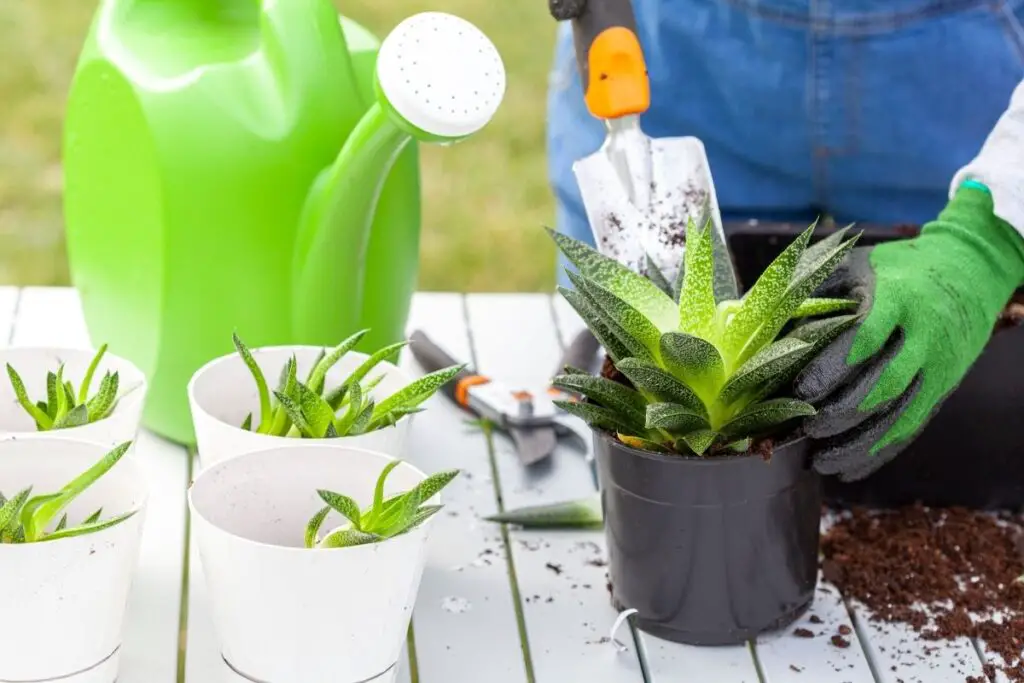
Haworthias are slow-growers, and thus, they don’t require frequent repotting.
You can re-pot them every 2-3 years.
Though they take a lot of time to outgrow their containers, you must re-pot them.
If you don’t do it, they will outgrow their pots, become root-bound, and trouble the plant with overwatering, underwatering, overcrowding, and stunted growth.
So, never miss the repotting part.
The roots must get enough space to grow and spread well.
Additionally, the Haworthias sometimes produce their offsets in the root portion.
Not repotting them can result in overcrowding, due to which the plant and offsets will fight for nutrients and water.
Insufficient requirements will result in stunted growth.
Also read: How To Repot Haworthia? (Ideal Timing+Step-by-Step Guide)
Haworthia planter type and size
This point is not for you if you grow Haworthias in the ground.
Many people grow Haworthias in containers because of their small size.
To select an ideal container for Haworthia, first, check the drainage system.
It must have drainage holes to drain out the excess water from it.
Otherwise, the roots will stay damp and start rotting.
The second important thing is the size.
Choose a size depending on the plant’s size.
A big or deep pot causes overwatering, whereas a small pot causes potbound.
While repotting, choose a planter only 1-2 inches bigger than the current one.
The third thing to consider is the type.
Though you can use any container, ideals are terra cotta, ceramics, plastic or wooden.
Terracotta wicks away moisture faster and can save the plant from overwatering.
The plastic can retain moisture and save it from underwatering.
Wooden pots don’t heat the plant and keep the roots cool.
If you want to decorate your garden or interior space, ceramics are a good choice.
But, they might not have a drainage hole.
Either you have to drill one or use cachepots with drainage holes.
Also read: What Size Pot For Haworthia? (Ideal Material+Size Guide)
Haworthia propagation
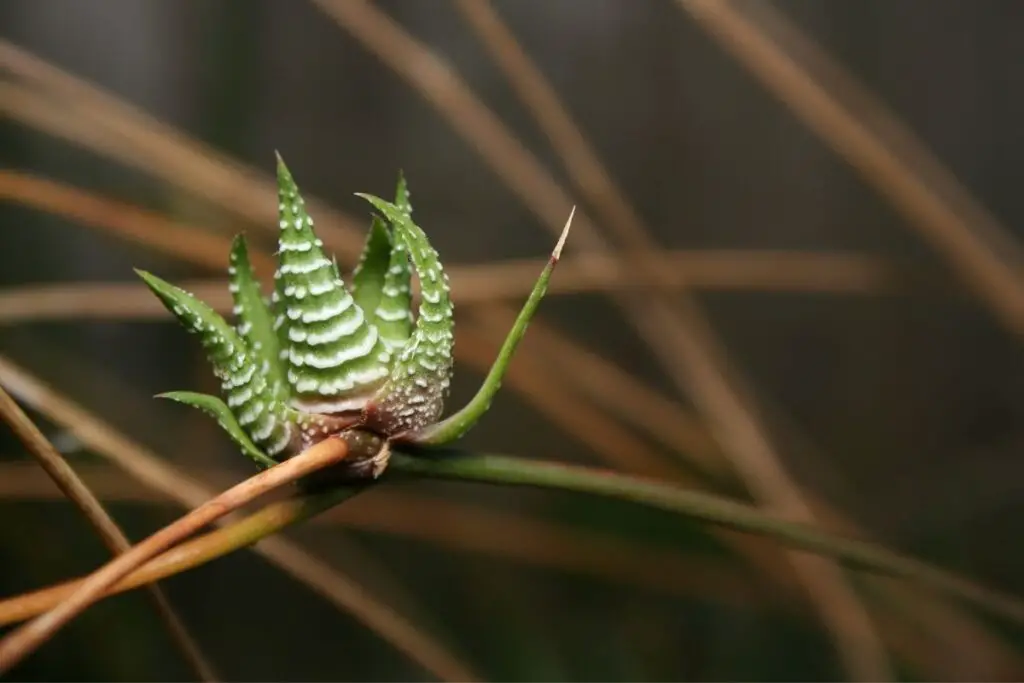
Haworthias can be propagated in three ways – offsets, leaf cuttings, and seeds.
Out of the three, offsets and leaf cuttings can be performed in soil and water.
Offsets give better results in water than leaves.
Separate the offsets from time to time and plant them in a suitable soil mix.
Choose babies with roots.
You can also place the offsets in water.
Take a transparent jar, fill it with clean water and fill it.
Only use distilled water or rainwater.
Change the water from time to time.
For leaf cuttings, select a healthy plant and cut off a young leaf.
It will ensure successful propagation.
Keep the leaf cuttings on a tray for some days until they form callous.
Spread some rooting hormones for fast rooting and preventing fungus.
After some days, take the leaves and place them in the soil or water.
After 4-5 weeks, you will find offspring.
You can also do the leaf-cutting if your plant is dying, but some healthy leaves are still left.
You can get back more Haworthias even if you lose the current sick one.
For seed propagation, you have to wait for blooming.
It is rare because seeing the flower depends on their health and luck.
If you are desperate, buy seeds online.
Very few people try this traditional method because it takes a lot of time to produce seedlings.
But, you can try it to gather experience about the process.
Choose seeds that are not older than 6 months.
Soak Haworthias in lukewarm water for 30 minutes.
Take them out, choose a shallow pot, add some cactus soil mix, and spread evenly.
Cover the Haworthias with a thin layer of sand and spray water into the soil to moisten it.
Cover the pot with plastic and open it daily for 1 hour to let them have air and oxygen.
Also read: How To Propagate Haworthia? (3 Ways+A Step-by-Step Guide)
Haworthia blooming
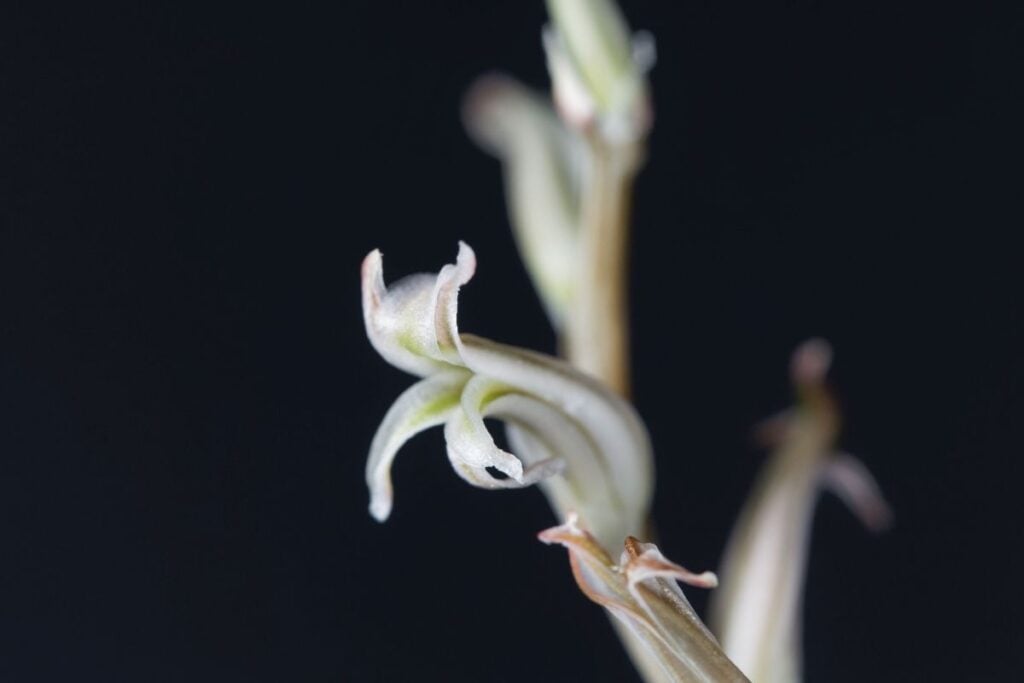
Haworthias are also known for their blooming.
If their growing conditions are perfect and healthy, they will flower after they become mature.
You will see a flowering stem emerging from the middle of the rosette with a flower bud.
It is called an inflorescence.
The flowering stem can grow around 16 inches.
Haworthias are expected to flower during the long summer days.
To encourage them to flower, increase watering gradually after the stem starts emerging.
It will help the stem to stand upright.
After some months, you will find clusters of buds. You can cut off the stem after the plant has finished flowering.
Haworthias won’t die after flowering because they are not monocarpic.
So, you don’t have to worry after watching their blooming.
They can flower multiple times without dying.
Also read: Does Haworthia Bloom? (How, When)
Haworthia toxicity
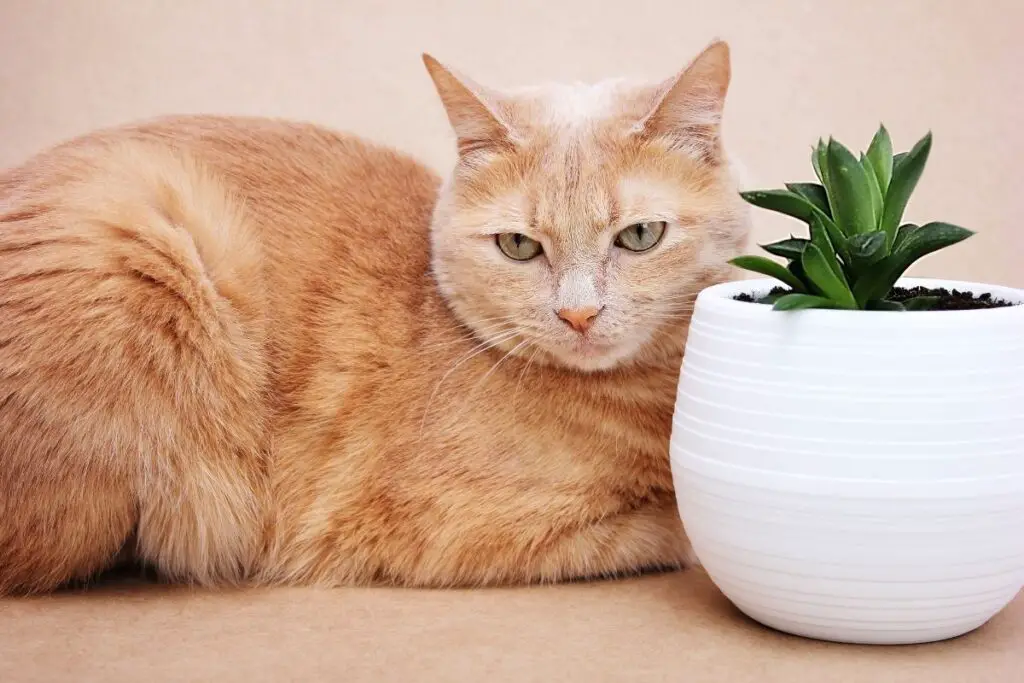
Haworthias belong to the non-toxic category by the American Society for the Prevention of Cruelty to Animals.
However, ingesting them is not good.
If consumed in large quantities, it can result in gastrointestinal or stomach upset.
Their sap can cause skin irritation.
None of these will be deadly or stay for long.
Also read: Are Haworthia Plants Poisonous? (Cats, Dogs, Small Animals)
Haworthia Companions
Planting only Haworthias can be a bit boring.
So, you can try other types of succulents and flowering plants, with Haworthias having the same requirements.
For example, you can try Echeveria, Aloe Vera, Gasteria, Kalanchoes, Desert Rose, etc.
You can also try some sun-loving flowering plants or ornamental grasses like Osteospermum, Blue Fescue Grass, and Yarrows.
These will not only change your garden’s look, but they will also protect the Haworthias from direct sunlight.
Also read: What Can I Plant With Haworthia? (Companion Plants With Pictures)
Haworthia problems
Haworthia may face multiple problems if the above care tips are not followed for them adequately.
Let’s have a quick look at the problems.
Leaves turning brown or yellow
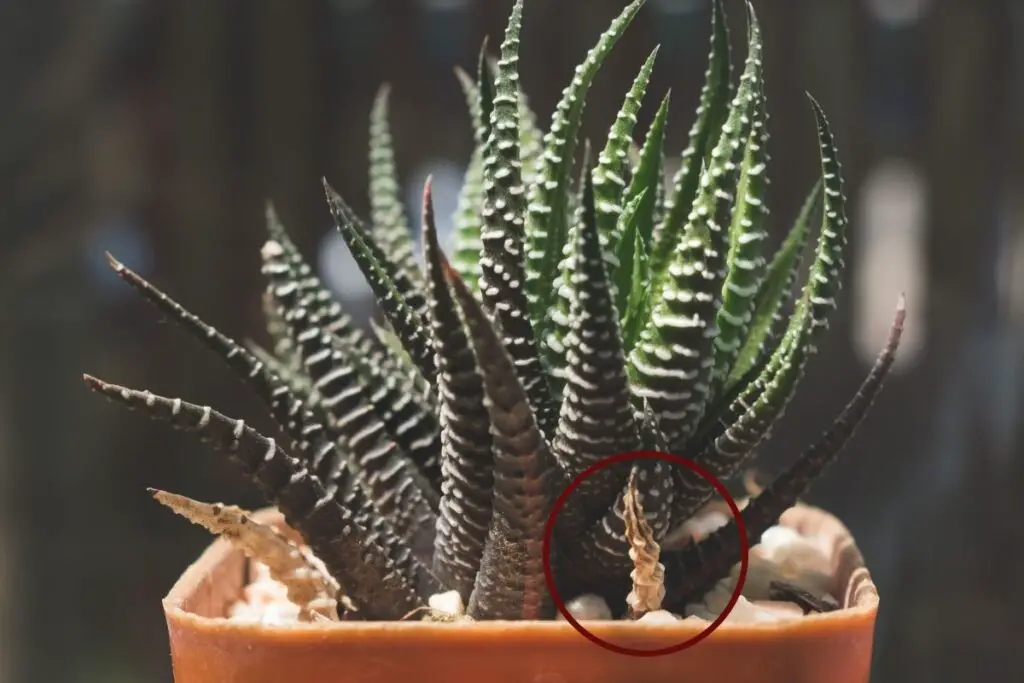
Overwatering, root rot, underwatering, under-fertilization, over-fertilization, poor drainage, temperature shock, air currents, too much light, or infestations are common reasons behind Haworthias turning brown or yellow.
When the arrowhead receives too much or too little water, the bottom leaves change their color because they are close to the soil.
Sometimes, the leaves fall off even with a light touch.
The leaves will also be soft and mushy in overwatering and root rot.
On the contrary, the leaves will be dry and crispy in underwatering.
In overfertilization, the leaves turn brown due to salt burn.
When sudden air currents hit the Haworthias, the tips get attacked first. That is why the tips turn brown first.
It first turns red, white, or yellow when exposed to direct sunlight.
It is a pigment they produce to protect themselves.
If you keep them under the direct sun, the leaves get sunburnt and turn brown.
In the case of pest infestation, most bugs suck out the leaves’ juices, thus making them dehydrated.
It results in yellow or brown leaves.
Brown and black spots all over the leaves, flower petals, and stems are signs of diseases like Rust, southern blight, botrytis blight, etc.
Also read:
- Why Is My Haworthia Turning Yellow? (Causes+How To Fix)
- Why Is My Haworthia Turning Brown? (Causes+How To Fix)
Leaves turning red or white

Haworthias turn red or white mainly due to exposure to the direct sun or extreme temperatures.
These colors are a pigment named anthocyanin which the plant produces to protect itself from direct sunlight or sudden temperatures.
It is a signal to you that the plant is not enjoying the current environment.
They need protection or change.
Underwatering could also be the reason behind red leaves.
The more they are thirsty, the more they will preserve water in the leaves.
When this happens, the leaves begin to blush, thus turning red.
Other than that, red marks could be signs of pest infestation.
For example, spider mites can leave behind red spots all over the leaves and stems.
White marks could be signs of powdery mildew, a fungus disease that occurs due to hot and humid conditions.
Also read:
- Why Is My Haworthia Turning Red? (Causes+How To Fix)
- Why Is My Haworthia Turning White? (Possible Problem+Solution)
Black spots on Haworthia
It happens either due to diseases or due to cold injury.
Haworthias are tender succulents and cannot tolerate cold temperatures.
If they receive temperatures below 30°F, they will get frostbite.
The leaves will have a damp black mark.
It happens because the water in the leaves gets frozen and bursts the plant cells inside.
You can solve it by keeping them in a warm room, avoiding watering, and letting the leaves dry.
Also read: Is My Haworthia Dying? (9 Signs+How To Fix)
Leaves falling apart or closing up
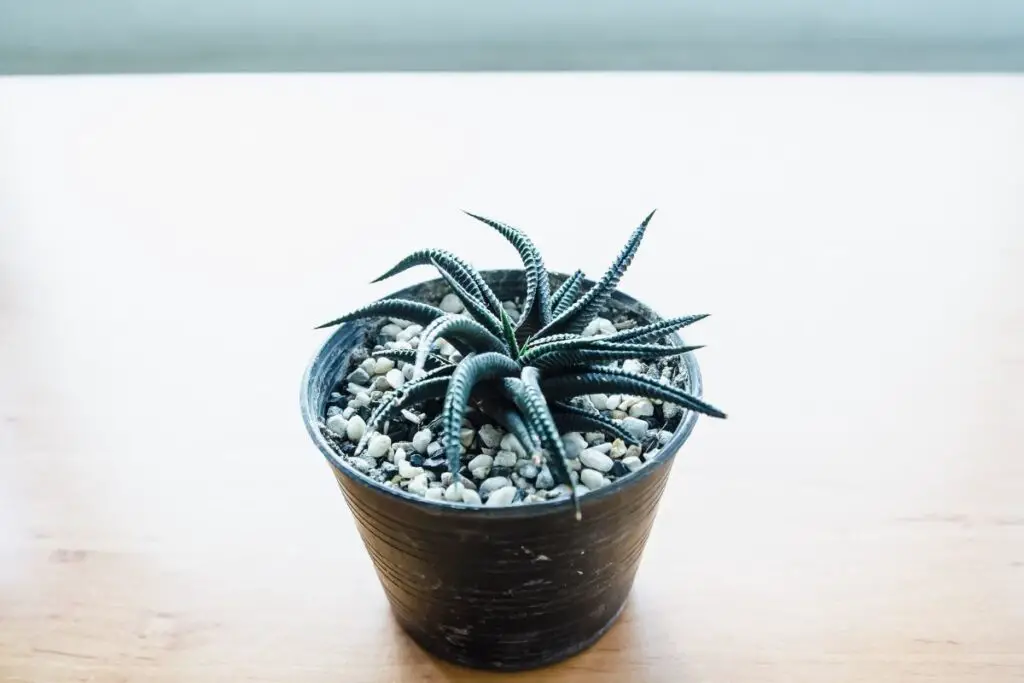
Leaves falling off the plant can happen due to overwatering, underwatering, poor drainage, chemical shock, or natural.
The plant becomes so weak during watering issues that the leaves fall off easily.
Sometimes, they stay but fall off immediately after a little touch.
Even poor drainage can also cause water issues because if the water doesn’t drain well or retain the moisture properly, it would ultimately cause dampness or dehydration.
The result will be the same as water issues.
Sometimes, while dealing with fertilizers, pesticides, or fungicides, overdose can give them a chemical shock and make them lose their leaves.
You must flush off the soil monthly and use these chemicals carefully before use.
Read the instructions thoroughly to avoid mistakes.
Sometimes, leaves falling apart could be natural.
Over time, the plant uses all the energy from the leaves, making them old, and ultimately, they fall off.
The empty areas will get filled up with new leaf growth.
The same reasons apply for Haworthias closing up.
The leaves will either fall apart or close up during irregular temperatures.
The leaves will fall off during extended heat periods because it is their natural response.
Sometimes, they close up to protect themselves from adverse temperatures, especially when exposed to the direct sun.
Also read:
- Why Is My Haworthia Falling Apart? (Possible Causes+Solution)
- Why Is My Haworthia Closing Up? (Possible Causes+Solution)
Leaves etiolating
It happens when the Haworthias receives dim light.
Though they can’t survive the direct sun, at least indirect sunlight is mandatory to them for thriving.
Otherwise, the plant will etiolate to reach some light source.
Over time, the leaves may turn yellow (due to chlorosis) and fall apart.
Additionally, low light can keep the soil damp for a long time, thus causing overwatering.
Stunted growth
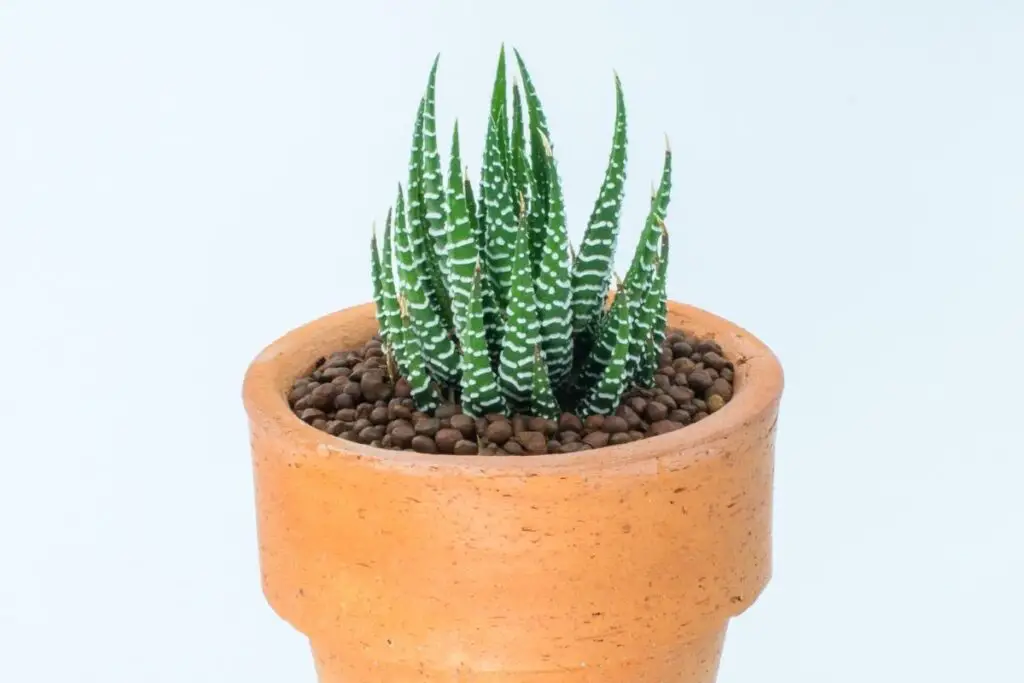
Root-bound, overcrowding, and lack of nutrients are common problems.
In rootbound conditions, the roots outgrow the containers and fight for space.
Due to insufficient space, they can stop growing.
The same goes for overcrowding of the plant and its babies.
If you don’t separate them in time, all of them will fight for space and nutrients.
Due to the shortage of space and nutrients, they will stop growing.
Other than these, water, light, fertilizer, or any other issues can also result in stunted growth because these can interrupt the plant’s smooth growth.
Due to this intrusion, the plant will stop growing.
Gradually they will start to show symptoms like leaf discoloration, leaf loss, etc.
Sometimes, people misunderstand the plant’s natural features as stunted growth.
You should know that Haworthias are slow-growers, and they go dormant in the summers.
Sometimes, they will even grow slowly during the winters.
These are their natural features and not any problem.
Following the correct care tips properly, as I mentioned earlier, you can avoid these problems easily.
You can also go through the other articles discussing these problems individually.
Also read: Why Is My Haworthia Not Growing? (Possible Problem+Fix)
Root rot
It happens when the plant is over-watered for a long time.
If the damage level is low, you can save the plant.
Take the plant out, remove the damaged parts and plant them back in new soil.
Make sure the soil is well-drained.
Dying Haworthias
Many people sometimes consider the below problems and signs as a symptom of a dying plant.
These problems can even kill the plant if you don’t treat them correctly.
Also read: How To Revive A Dying Haworthia? (Possible Problems+Fix)
Haworthia pests and diseases
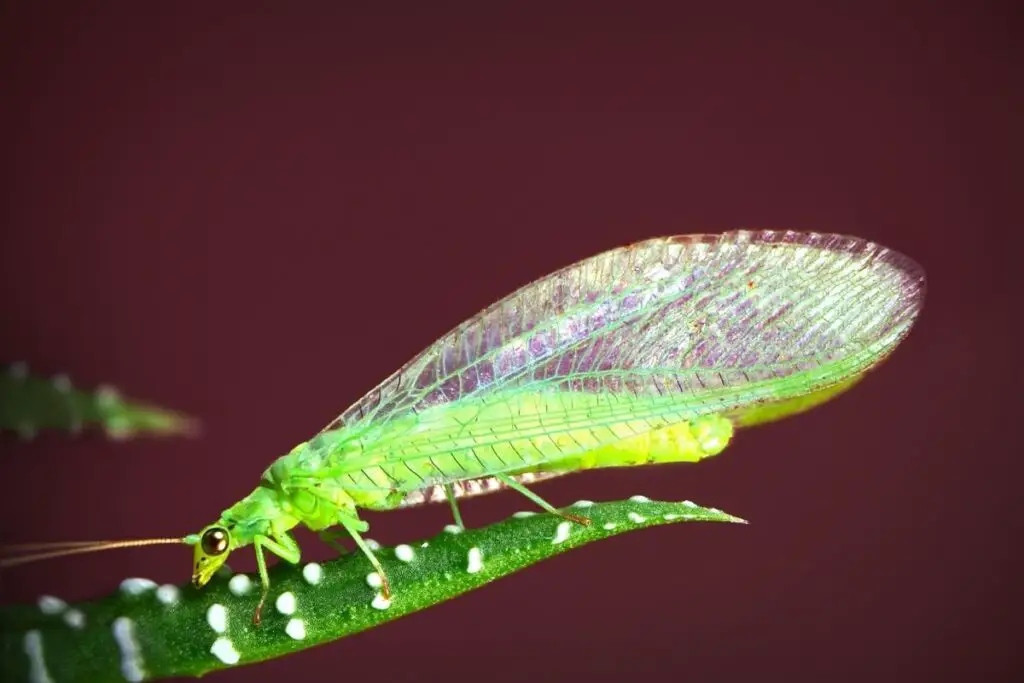
Bugs: Haworthias are generally pest-resistant plants.
But if conditions are made ideal, they too will get attacked by bugs and pests.
Bugs like aphids, mealybugs, spider mites, aloe mites, fungus gnats, scales, snout beetles, and pests like rodents, rabbits, lizards, and deer are some of the most common ones found in Haworthia.
Mostly the outdoor Haworthias get attacked more than the indoor plants.
To get rid of the bugs, you can use the following steps:
Isolate the plant to prevent spreading.
You can handpick them if they are small in number.
For example, fingernails or tweezers can remove the brown bumps due to scale infestation.
You can release ladybugs as they love to feed on aphids or soft-bodied scales.
Dab or spray rubbing alcohol.
It can weaken hard-shelled bugs like hard-bodied scales and mealybugs.
You can use insecticidal soaps like Safer Soap and Castile Soap mixed with water.
If any bug infects the roots, you can take the whole plant and soak it in warm water mixed with potassium fatty acid or hydrogen peroxide solution.
Neem oil is the best organic solution.
Mix some of it with water and spray to the plant. It even works for preventing fungus diseases.
Just ensure not to expose the plant to direct sun during treatment, else the plant will get burnt.
If all the above method fails or the infestation is huge, use chemical pesticides and insecticides.
Read the instructions carefully before using them.
Aloe mite is like a cancer-spreading pest. The plant develops a gall.
If the problem spreads too much, saving the plant becomes impossible.
However, removing the gall and other infected parts at the initial stage might save the plant.
Also read: Haworthia Pests Problems: Common Pests+How To Eliminate
Other pests, animals, and pets
For protecting the plant from pests like rodents and other animals:
Create physical barriers.
Plant some deterrent plants at the garden border like marigold, sage, lavender, rosemary, etc.
Spray some deterrents like Liquid Fence, Plantskydd, cayenne powder, coyote urine, or mothballs.
Train your pets not to go near them.
Diseases
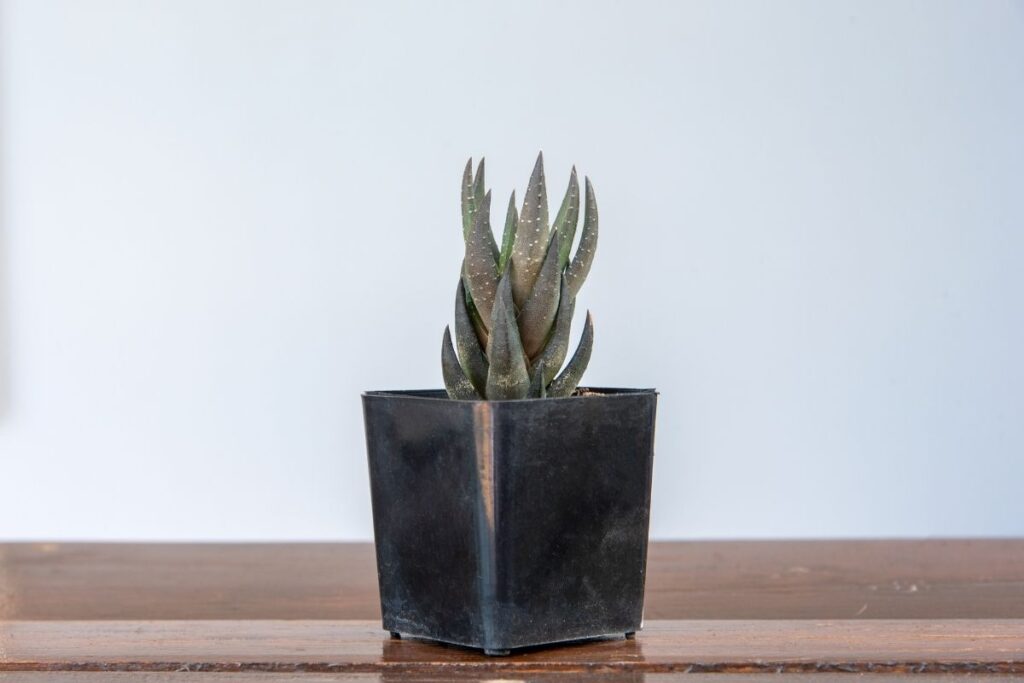
Many diseases can attack Haworthias if conditions are preferable for them. Diseases like Rust, Powdery Mildew, Southern Blight, Botrytis Blight, Root, and Crown rot are common problems.
They occur mostly due to prolonged damp conditions accompanied by high humidity.
To get rid of fungal diseases, follow the ways below:
- First and foremost, quarantine the plant to prevent spreading.
- You can use some neem oil if the disease has just started.
- Apply some fungicide to the infected area.
- You can also use homemade fertilizers made with 1 cup of baking soda, ½ teaspoon liquid soap, and 1-gallon water.
- You can use copper-based fungicides to fight powdery mildew. Continue applying every 7-10 days until the problem gets solved.
- Some diseases are soil-borne. You need to sterilize the soil in a microwave. The soil of the potted plants is easy to sterilize.
- It is better to take precautions to avoid the circumstances which result in the diseases. Reviving the plant becomes a challenging job if the infection is already present.
Wrapping Up
Choose an ideal spot for Haworthias. A place with indirect light, surrounded by a few tall trees at a distance or a low wall, would be suitable.
Put on shading nets outside or sheer curtains inside if they get too much sun. For indoor plants, use artificial lights if they don’t get enough light.
Rather than following any regime, water them only when the top 1-3 inches are dry because routine may vary depending on many aspects. Reduce watering during the summers and winters.
Fertilize Haworthias only once in the spring and fall. Avoid fertilizing during summer and winter. Plant them in well-drained soil.
Use the soil mixes I suggested for good results. Let them have an average temperature of 65-75°F. If your Haworthias are outside, take them inside during the cold winters. Don’t give them very high humidity.
Take care of them if you want them to flower. Propagate Haworthias to get more of them.
Check the plant’s condition daily to identify the problems, if they face any. It will also help you to check for pests and diseases. Treat the issues as soon as you notice them.
Reference: The Haworthia Society, Botanical Studies, University of Wisconsin-Madison, Sciencedirect, Researchgate, Haworthia Study.
